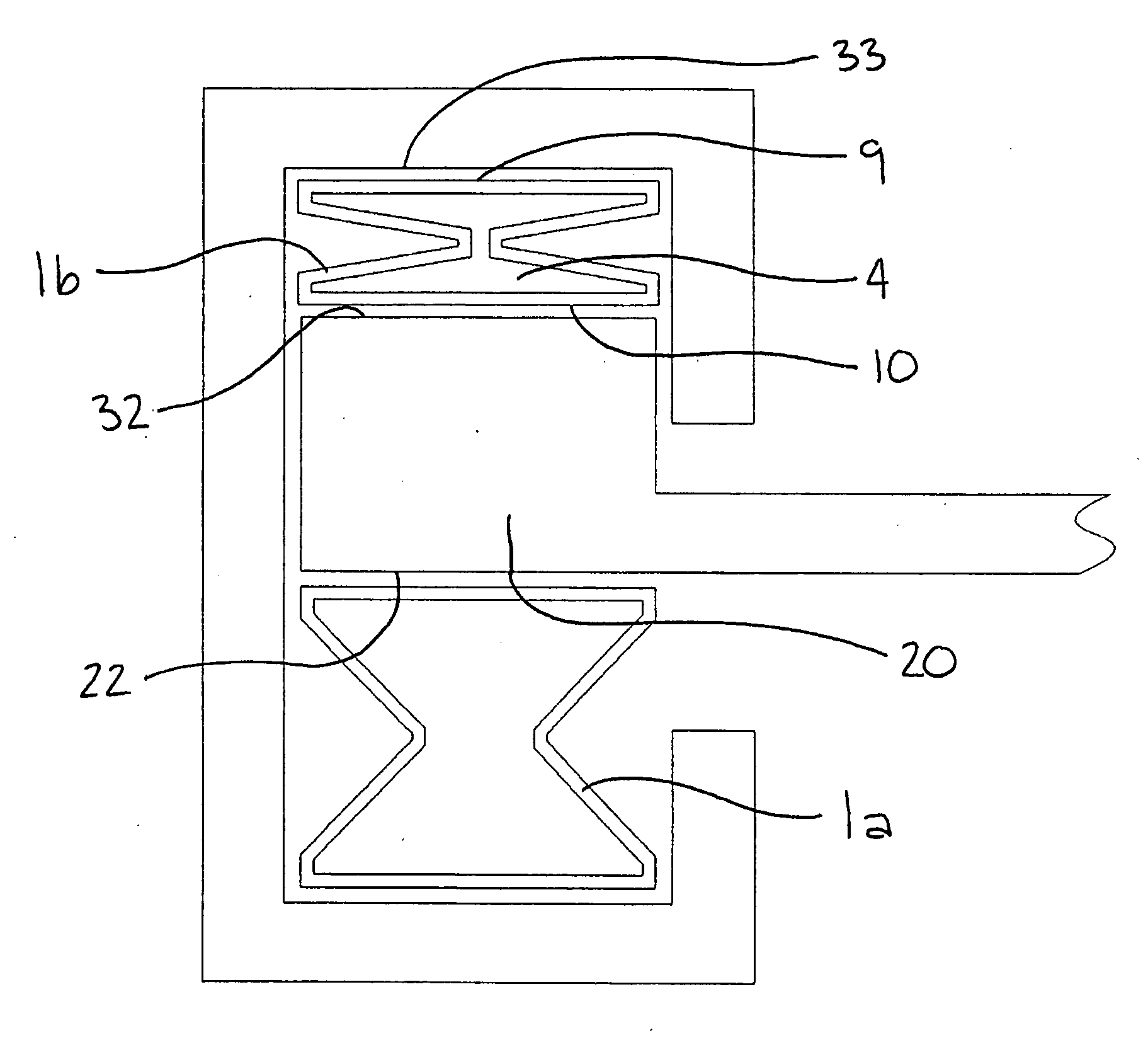Device for locating a first aerospace component relative to a second aerospace component
a technology for aerospace components and components, applied in the direction of material gluing, turning apparatuses, key-type connections, etc., can solve the problems of structural failure of the joint and/or the components, fuel leakage or overall breakdown of the aircraft, and metal mechanical fixtures
- Summary
- Abstract
- Description
- Claims
- Application Information
AI Technical Summary
Benefits of technology
Problems solved by technology
Method used
Image
Examples
Embodiment Construction
[0039]Referring now to the accompanying drawings, a device 1 for locating a first aerospace component relative to a second aerospace component is shown in FIGS. 1 to 5 comprising a bladder 2 formed from a flexible, incompressible membrane 3, which encloses and defines a fluid receiving space 4. An inlet 5 and an outlet 6 communicate with the fluid receiving space 4 at opposing ends of the bladder 2. Prior to use, as seen in FIG. 1, the device 1 is in an unexpanded state and is generally elongate and cuboidal in shape, although the device is not limited as such, as will be explained hereinafter. The bladder 2 has a front wall 7 and a rear wall 8 at opposing ends of the bladder 2, an upper and a lower wall 9, 10 and two sidewalls 12,13, each extending between the upper and lower walls 9,10. The inlet 5 extends through the front wall 7 to communicate with the fluid receiving space 4 and the outlet 6 extends through the rear wall 8 to communicate with the fluid receiving space 4.
[0040]W...
PUM
| Property | Measurement | Unit |
|---|---|---|
| flexible | aaaaa | aaaaa |
| pressure | aaaaa | aaaaa |
| stress concentrations | aaaaa | aaaaa |
Abstract
Description
Claims
Application Information
 Login to View More
Login to View More - R&D
- Intellectual Property
- Life Sciences
- Materials
- Tech Scout
- Unparalleled Data Quality
- Higher Quality Content
- 60% Fewer Hallucinations
Browse by: Latest US Patents, China's latest patents, Technical Efficacy Thesaurus, Application Domain, Technology Topic, Popular Technical Reports.
© 2025 PatSnap. All rights reserved.Legal|Privacy policy|Modern Slavery Act Transparency Statement|Sitemap|About US| Contact US: help@patsnap.com



